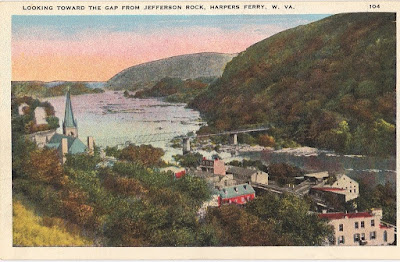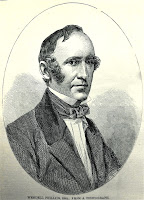"So We Go": A Decade of Blogging John Brown the Abolitionist
I find it somewhat hard to believe that it has been ten years since I launched this blog, yet as I revisit the first entries here, I find that I made the initial two or three at the end of December 2005. Many of my readers will undoubtedly share the same experience in asking, "where did ten years go?" Personally, when I launched this blog, my wife Michele was expecting our son Louis Michael. Today he is approaching his tenth birthday. Along with that, I'm ten years older, and am beginning to feel it. Such is life, or as Brown would put it, "so we go."
This closing decade has been eventful for our study, and a good many books were published between 2005 and 2015. Most notably published were David Reynolds' acclaimed cultural biography, John Brown Abolitionist (2005) and Tony Horwitz's much reviewed account of the Harper's Ferry raid, Midnight Rising (2009). Doubtless, the Reynolds and Horwitz books represent different readings of the historical record, although both books on John Brown received a great deal of attention and brought the Old Man's story into popular and academic conversations beyond the other books that have been published.
Other vital books were published, too, most notably, Brian McGinty's John Brown's Trial, which for me as a student of Brown preparing an extensive study of Brown's last days over the past few years proved my greatest help. One or two other books, along with an article here and there, on the trial aspect of Brown's last days have been written in the past, but McGinty's book brought a fair and insightful perspective to bear, along with legal expertise, on the trial episode at Charlestown. Two other major contributions to our study are made by Steven Lubet, another legal scholar and historian, who has given us two biographies of Brown's brave raiders, John Cook and John Copeland. John Brown's Spy (2012) and The "Colored" Hero of Harper's Ferry (2015) provide insights long unexplored by students of this study, and much needed, lest we forget that the men who followed John Brown to Virginia and--in most cases--to death, did so as patriots of human freedom with their own worthy stories. Students of the raiders may correct me on this point, but I think there is only one other biography of a Harper's Ferry raider, that being John Wayland's John Kagi and John Brown (1961). Further efforts are needed to bring the lives of Brown's men (and sons) to light with greater detail.
 By way of reference, two other books published this decade are important: Robert McGlone's John Brown's War Against Slavery (2013) and John Stauffer and Zoe Trodd's The Tribunal (2012). McGlone's expansive work is technically a biography, but it's greatest offerings are as a kind of thematic reference work; the Stauffer and Trodd book likewise offers an abundance of documentary material that enrich our study. I will say nothing other than this decade has also been productive for my own work, including my two most recent books, narrating and documenting Brown's last days as a prisoner in Virginia.
By way of reference, two other books published this decade are important: Robert McGlone's John Brown's War Against Slavery (2013) and John Stauffer and Zoe Trodd's The Tribunal (2012). McGlone's expansive work is technically a biography, but it's greatest offerings are as a kind of thematic reference work; the Stauffer and Trodd book likewise offers an abundance of documentary material that enrich our study. I will say nothing other than this decade has also been productive for my own work, including my two most recent books, narrating and documenting Brown's last days as a prisoner in Virginia.By way of readership, this John Brown the Abolitionist, A Biographer's Blog cannot boast a great following or great notoriety as prominent blogs go, but to date there have been over 360,000 page views from around the world. This blog has not only been regularly visited by readers in The United States, but also from The United Kingdom, Ukraine, Germany, Belgium, France, Russia, Canada, Poland, Netherlands, South Korea, Taiwan, Australia, Brazil, China, and Mexico.
By way of writers, over the years, I've been fortunate to include submissions by a few key contributors: Jean Libby, a veteran researcher and the John Brown photographic aficionado; Grady Atwater, the administrator of the John Brown State Historic Site in Osawatomie, Kansas, and H. Scott Wolfe, the Historical Librarian for the Galena Public Library District and “staff historian” of Galena’s DeSoto House Hotel (Illinois’ oldest operating hotel). Certainly I am grateful for the information and input they have provided over the years. Like most amateur blogs, this one has had its gaps and downtime, but nevertheless it has stayed afloat in no small part due to the encouragement of friends like these and others in the study.
 |
| L. DeCaro Jr. |
To friends and readers, I wish you a happy and most prosperous new year. Whatever happens in 2016, remember:
John Brown's body lies a mouldering in the grave, but his soul goes marching on.
Yours in truth,
L. DeCaro Jr.






















